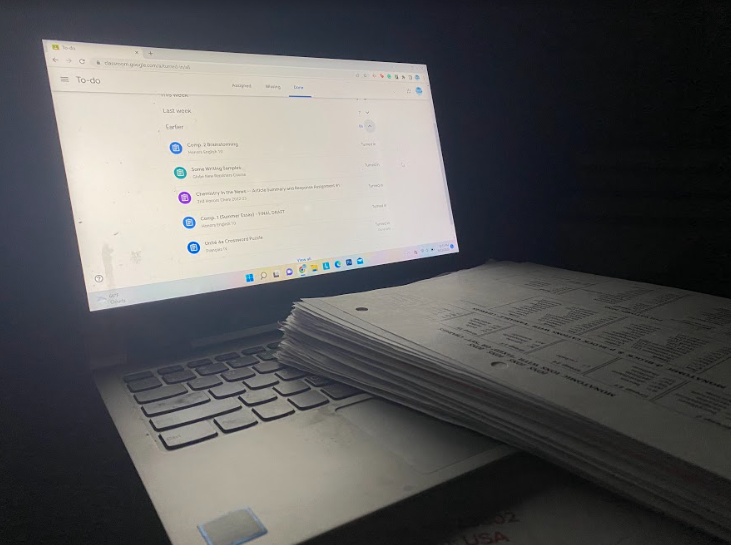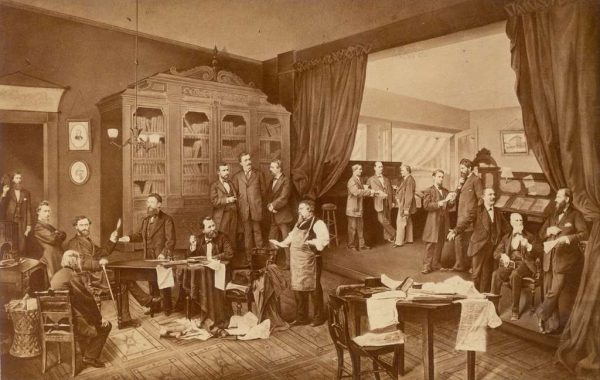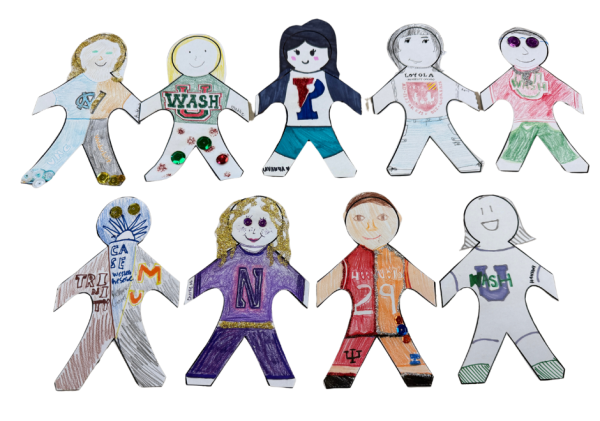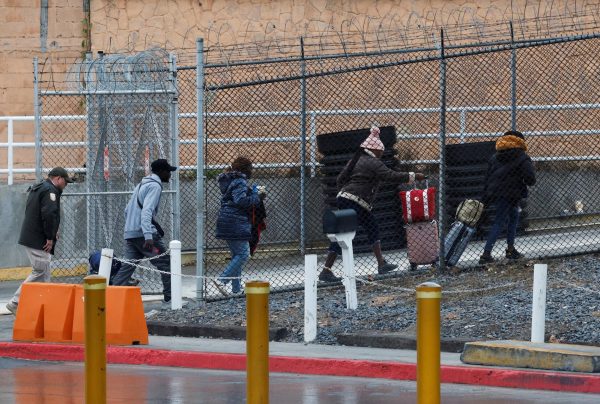The Pandemic’s Effects on use of Paper vs. Digital Resources
After one month of school, sophomore Analee Miller has already received over 116 handouts on paper and has turned in around 30 assignments online.
Over the past few years, teachers have dramatically changed the way they need to teach their students. During the peak of COVID-19, teachers could only assign work online which was challenging for them to adapt to.
“When making the switch to virtual learning, it was very difficult to convert those activities to an electronic format while still maintaining the same level of engagement,” said Social Studies teacher Kate Lyons.
Other teachers mentioned that in Zoom classes, students had the option to not turn on their cameras, decreasing engagement in classes. Students were often more distracted while in environments that were not school. Family members, pets, and electronics caused interruptions often. The engagement was not the only issue with online school; some resources were challenging to convert to an online setting such as certain documents or textbooks.
Screen time plays a significant role when teachers are assigning homework. A survey done by Statisticia in August of 2021 said that 51% of children in the U.S. spend three-plus hours on screens, not including homework. Since teens today already spend so much time online, it can be beneficial to have a break while doing their work on paper. “Too much screen time is not beneficial for anyone,” said math teacher Alexandra Conley.
The pandemic forced teachers to move online but this also made teachers more open-minded when it came to giving work online. While everyone was at home, they had no choice but to convert their lessons and resources into online materials that can now be used in person.
“I would say that I am more willing to use electronic activities because I had to develop them during virtual teaching,” Lyons said.
Online learning forced people to adapt to the usage of Google Classroom and other online tools. Keeping assignments online can help students and teachers stay organized and have easy access to their work wherever they are. Rather than having to sort through folders and binders full of paper, they can just head to their drive or google classroom to find the work.
“On Google Classroom, with assignments, it makes it really easy to have everything organized in one place with due dates that are very clear and distinct,” said sophomore Analee Miller.
Teachers additionally find keeping things online simpler and easier to access. They can grade and give feedback more quickly online.
“Online is certainly the easiest because you do not have to take massive amounts of papers home to grade; you already have it with you,” said CTE teacher Lauren Compton.
Some teachers feel the need to reduce paper in their classrooms to help out the environment. In 2020, Yale University said that they saw a 90% decrease in their spending on paper from previous months showing the impact of the pandemic on paper use.
“I also do believe in the importance of being more environmentally friendly in my classroom by reducing the use of paper, so whenever I can, I try to assign online work,” said CHS French teacher Christine Darling.
An average school will use 2,000 sheets of paper a day which means over 320,000 sheets a year. This usage of paper causes many problems for the environment. For example, deforestation, air pollution, waste problems, and excessive usage of water and energy contribute to environmental issues.
“I think if we use it [paper] appropriately per task and utilize online for more resources (like providing text) we can curb the impact on the environment,” Compton said.
Students also think certain classes are using more paper handouts than necessary. “I think that if I look at the amount of paper that I have currently from about two to three weeks of school, that could have all been electronic,” Miller said.
Paper use can be reduced in many different ways such as always printing double-sided, avoiding unnecessary handouts, and allowing the option to use a whiteboard.
As the world moves forward from the pandemic, there will likely be even more of an increase in paper usage. In the future, teachers see themselves trying to relieve the effects of excess screen time by giving students the option of paper. Teachers are also considering letting students have more choices in what they use to complete their work.
“I’ve also noticed students having more of an opinion and preference about using paper vs. online,” said Compton.
Covid restrictions have helped teachers to see which ways of presenting information are more efficient and effective for different classes and assignments. Teachers now hold the perspective of before the pandemic and during when thinking through how they teach. In the classroom, they can adapt to many situations because they developed their work to be more flexible. Paper can be harmful if used excessively and helpful if used in the right situations, similarly to work online.
A $50 or more donation includes a subscription to the Clayton High School Globe 2024-2025 print news magazine.
We will mail a copy of our issues to the recipients of your choice.
Your donation helps preserve the tangible experience of print journalism, ensuring that student voices reach our community and that student democracy thrives.

Pronouns: she/her
Grade: 12
Years on staff: 3
What's an interesting fact about you? I love to bake!
What's your favorite movie? Thirteen Going on Thirty.
What do...
Kennedy is a Junior, and has been on the Globe staff for two years now. She is a page editor, and loves to write and express her ideas.







